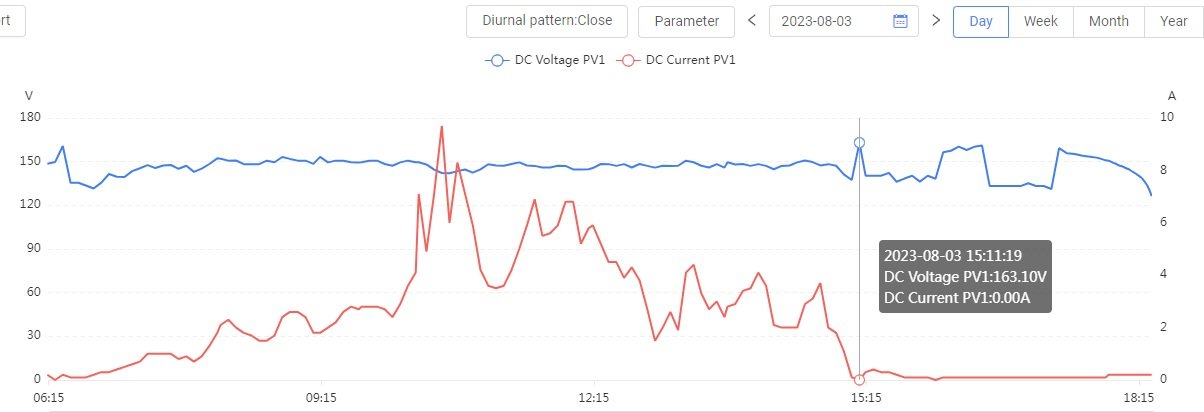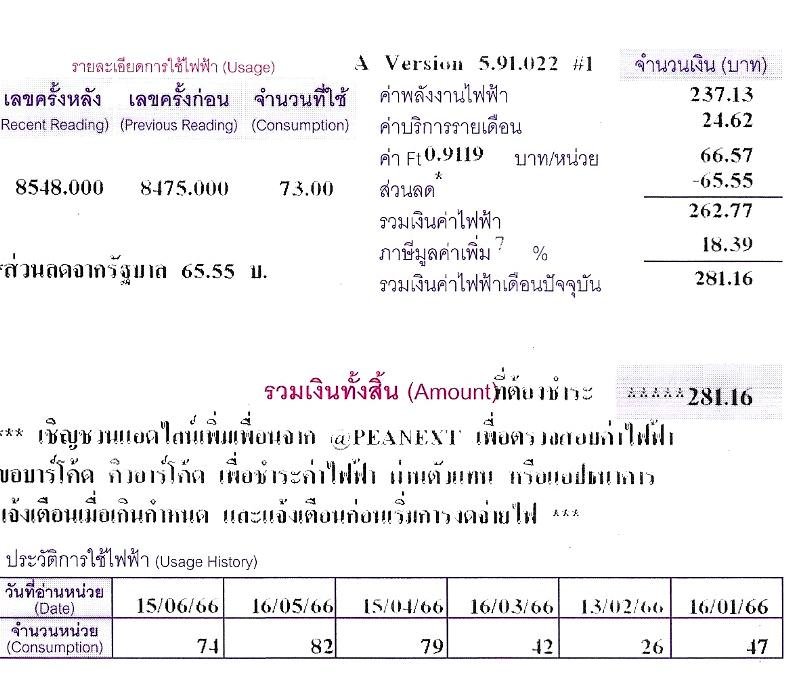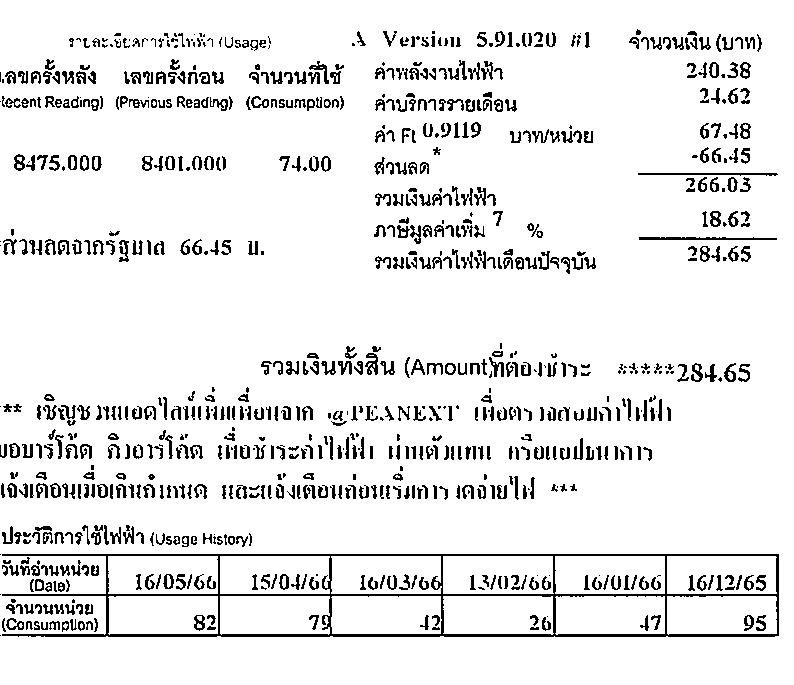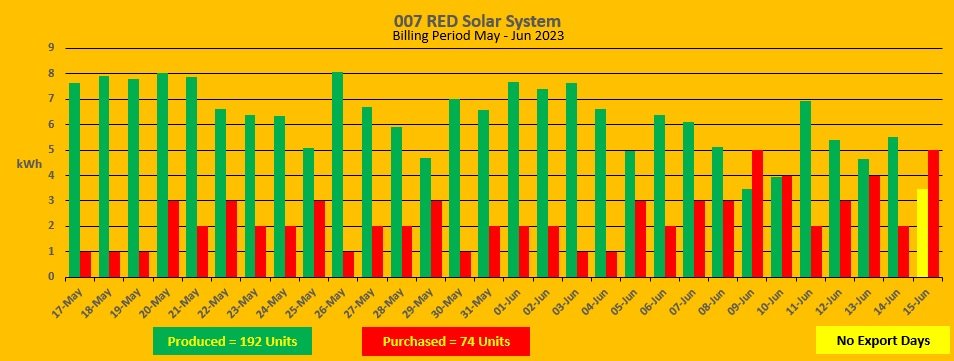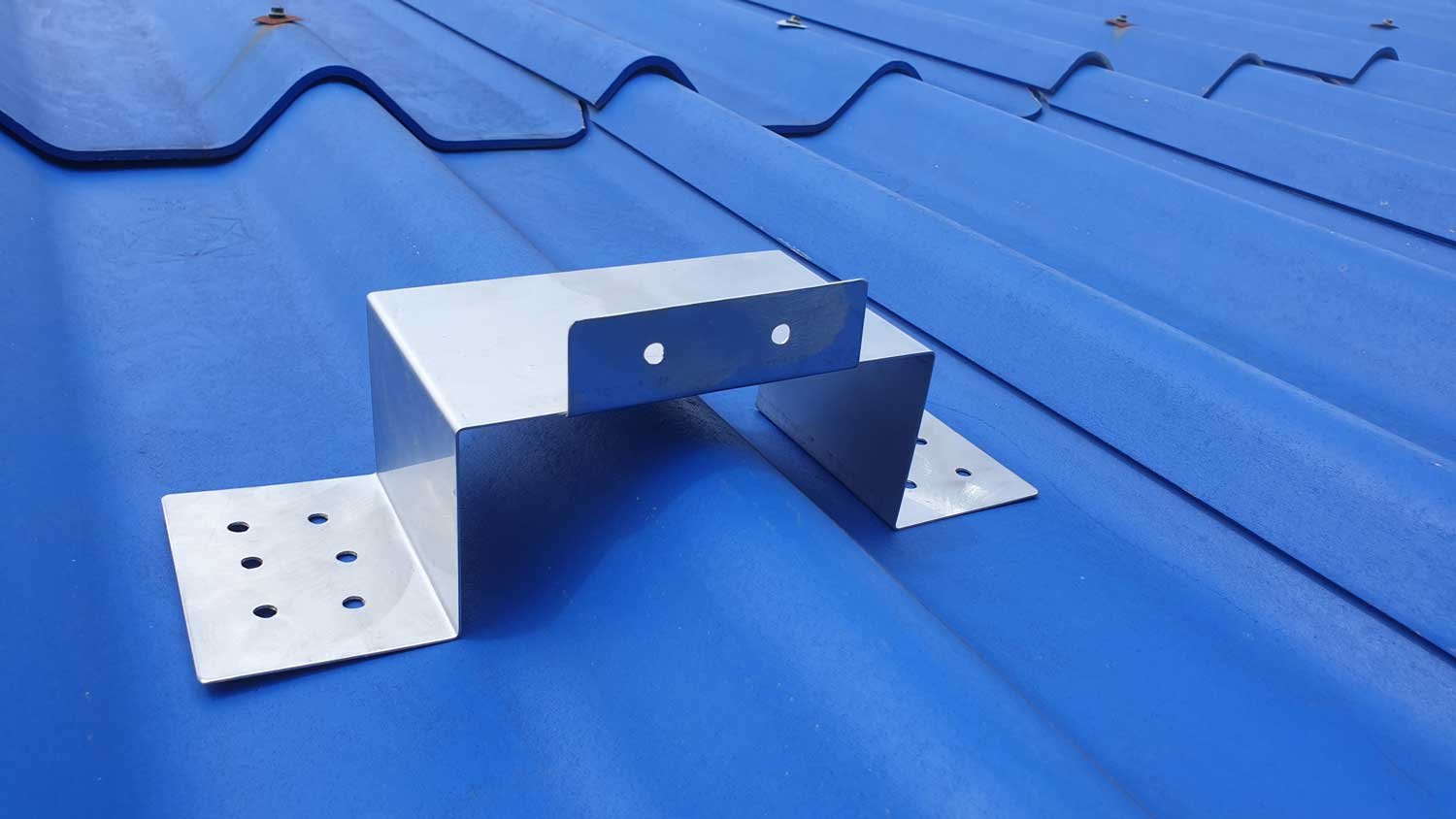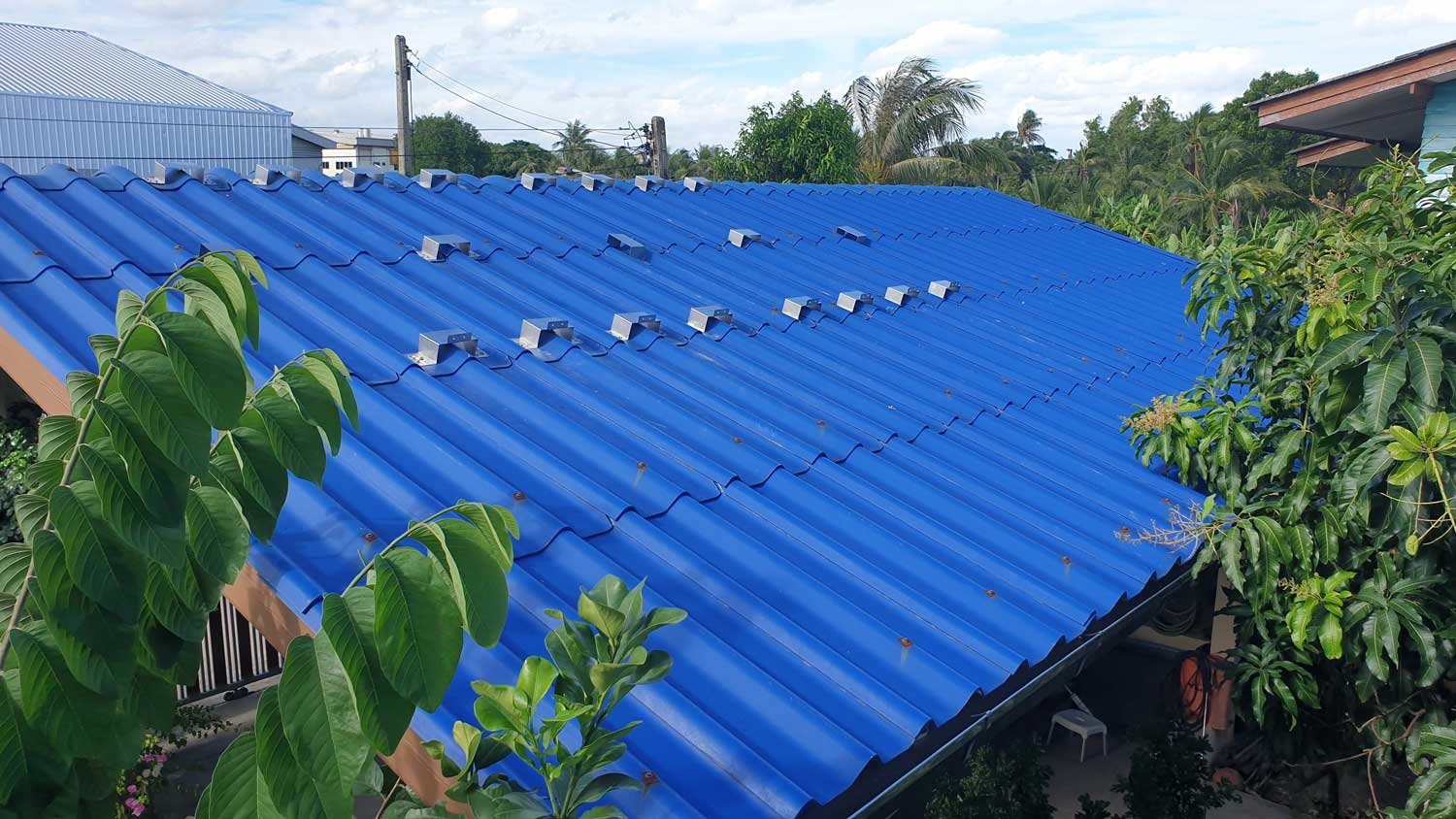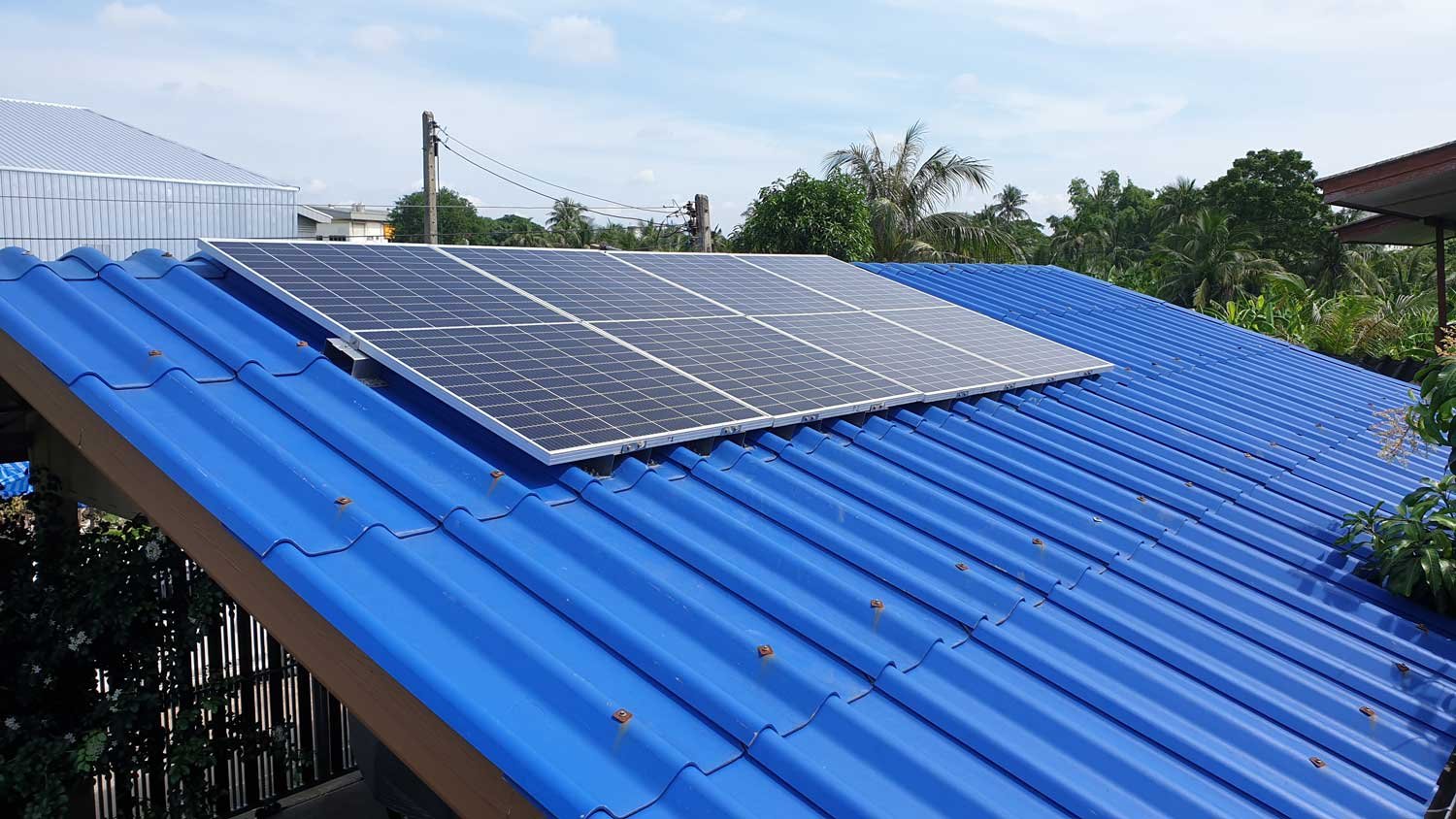-
Posts
936 -
Joined
-
Last visited
Content Type
Events
Forums
Downloads
Quizzes
Gallery
Blogs
Everything posted by 007 RED
-
I had a look back at my records for the insulation of the roof. I found the SCG Home Facilities on the web at https://www.scghome.com/customer-service The site is in Thai, but if you are using Google it will translate for you. If you click on the 'Home Products' facility on the top menu bar it will take you to all the services that they offer. On that page scroll down to the 'Thermal Insulation Installation' box and you will find all the details there including details of contact there contractor. I found the company, and their contractor, very good. Hope that helps.
-
I have a Samsung S22 Ultra, and it has a facility to both send and receive emergency messages. My service provider is AIS and my SIM is about 15 years old. As you mentioned in your original post, the 'app' does not appear under the Apps setting. Go to your Settings (little gear clog), and then scroll down until you come to a feature entitled 'Safety and Emergency'. If you click on this it will take you to a new page which lists facilities which can be activated if you so wish, such as: Medical Info Emergency contacts Emergency SOS Emergency sharing Earthquake alerts Unknown tracker alerts Silent notification when driving Emergency location service Wireless emergency alerts You will find that by clicking on each of the above mentioned topics, you can setup what you want to do (turn on/off), who to send an emergency message to etc. If you have activated any of the above mentioned facilities, you may find that they are also listed under your contact details (My profile). Personally I think its a nice facility which if I'm in trouble (taken ill), and able to press the power button 5 times, my phone will send an emergency message to my designated contact(s) giving them my location. So hopefully this is what you are looking for and you can turn on/off any facilities without having to 'brick' your phone. Good luck.
-
I think that is certainly something that I may consider. As you are aware, I'm currently using 4 x 415W solar panels on carport roof. If required there is ample space to add a further 8 panels. But then were getting into the realms of parallel connections etc, which is going to be a new learning curve for me. That said, I love a challenge. Many thanks for your suggestion.
-
Recently had the roof of our house insulated with SCG, 6 inch thick fiberglass. Because of my age, my wife decided that crawling around in the roof space was not a good idea. As a result we got SCG's local contractor to do the work for us. The contactor did an initial survey and made a couple of recommendations. Firstly, he advised that it would be necessary to cut the insulation around the couple of lights that protruded up into the roof space. He said this was to ensure that any heat given off by the light bulbs would not cause a problem with the insulation material. He advised that this would reduce, albeit by a small amount, the thermal insulation of matting in the vicinity of the lights. Secondly, and perhaps more importantly, he advised that the insulation tape which was wrapped around electrical cables in the roof space, which had been 'twist' joined together, were showing their age (age hardening). He said the there was a risk, again albeit small, that if a live wire touched the aluminium outer cover of the insulation material, this could potentially result in fire or someone being electrocuted. After discussions with the contractor, I decided that the lights which protruded into the roof space would be replaced with flush low power LEDs, thus negating the need to cut the insulation material and reduce its thermal efficiency. I had already replaced all the other incandescent light fittings in the house with LEDs, so this seemed a logical step. Following the contractors advice, I agreed that he would reinsulate all of the 'twist' joined cables withing the roof space and cover each joint with heat shrink as a double precaution. Obviously this would incur an additional cost. The installation required 20 rolls of 6 inch x 4 meters of fiberglass matting. It took the contractor (3 men), 3 hours plus to reinsulate all the electrical cable joints and then insulate the roof space. There was a small charge for the initial survey (250THB), but this was refunded when we made final payment for the work which the contractor carried out. Had I decided to do the job myself, the cost of the insulation material purchased via HomePro would have been 10,000THB plus delivery. The Contractor charged me 15,000THB, minus the initial survey fee. I have to say that since the fiberglass insulation has been installed, it seems much cooler in the upstairs rooms at the end of a hot sunny day.
-
My small scale Grid Tied Solar system has been running for 2 years, as of today. So, I thought it was time to take stock of what it has achieved. For those unfamiliar with my system, it basically comprises 4 x 415W half cut monocrystalline solar panels connected in series to a Sofar 2200TL-G3 grid tied inverter. The system is mounted on our carport roof which faces South and is inclined at about 15o, thus ‘catching’ as much sunlight as possible throughout the year. From historical usage data, my wife and I appeared to be using around 9 units a day. Not a lot when compared to many other forum members. Although we have air conditioners in the living room and the bedroom, these only get used when the humidity gets above 75%, and then only for relatively short periods of time to dry thing out. We prefer to use fans whenever necessary. When I originally designed the system, I determined that it should produce about 75% of our daily electrical needs so as not to get us into a negative meter reading situation. The project and was based upon @Crossy original topic The installation was DIY, so the only costs involved were for the hardware, which amounted to 28,000THB give, or take a few THB. Prior to activating the system, we were paying our local PEA 4.2THB per unit, this comprised:- (the cost of units used + connection charge + any FT adjustment + VAT) ÷ number of units used that month. So, for the purposes of evaluating the ROI I have continued to use 4.2THB/unit as the base cost of the units generated by the system. Obviously, the price per unit has risen over time, so in reality the payback time will in fact be much quicker. According to the monitoring system, as of this morning, the system has been operational for 730 days, during which time it has generated a grand total of 5,910 units, which at 4.2THB/unit, means that the system has reduced our PEA bills by 24,822THB during the past 2 years. I anticipate that at the current rate of production, in approximately 3 months’ time the system will have paid for itself, and from then on it should be ‘profit’ . 28,000THB ROI in approximately 2.25 years has turned out to have been a very worthwhile investment, in my opinion. As an added bonus, the Sofar monitoring facility also advises me that my small scale system has saved 1.8 tons of coal from being used, 4.68 tons of CO2 being emitted and 322 trees having been planted. Don't ask were they got those figures from as I absolutely no idea. Problems? No not really. That said, because we live in a semi-industrial area, the panels do tend to get quite dirty and need regular cleaning which is a bit of PITA at my age climbing onto the carport roof. We know which day the meter reader comes each month, so the system is switched into NO Export Mode the day before he comes, so this has never been a problem. That said, my main worry has always been the PEA turning up unannounced and seeing the meter spinning backwards. This did happen once when one of our neighbours apparently did not pay their bill and the PEA contractor arrived to disconnect their supply. There are 5 meters (including ours) on the same pole outside our house. I heard their pickup stop outside and realised who they were. Fortunately, our washing machine at the time was going ‘hell for leather’ in its spin cycle, so if they had looked at our meter it was more than likely spinning in the right direction. As an added precaution I also turned on our air con in the living room just to be absolutely sure. Once they had gone, I turned the system into No Export Mode, knowing that they would be back in a few days to reconnect the supply once the neighbour had paid their bill. Would I do anything different? Basically, no. I appreciate that the time may well come when our local PEA will come and replace their lovely spinning disc meter with a shiny new electronic one. Obviously this will prevent the system feeding any surplus power back to the grid. When that happens, I will have to consider our options. Do I add a couple of extra panels and stick system permanently into No Export Mode, or do I upgrade to an expensive larger hybrid system with an ESS. Only time will tell.
- 8 replies
-
- 12
-

-

-

-

-

-

Changing Email Address - 90 Day Reporting
007 RED replied to 007 RED's topic in Thai Visas, Residency, and Work Permits
By way of an update on my OP. I Initially tried to raise the question (“how can I change my email address on 90 day reporting system”) via the Immigration help number and email address. Frankly, they don’t seem to have the faintest clue on what I was trying to achieve. After several conversation with the help line number, they eventually put me through to someone in the IT department. I explained what I needed, but he wasn’t sure if it could/couldn't be done and he advised me that he would speak to the person who ‘runs’ the system and get back to me. True to his word, a few hours later he called me and said that there is no facility within the 90 day reporting system to enable me or anyone else to change my email address. He suggested, like several AN members, that I create a new ‘account’ with my new email address. On day 12 prior to the date of needing to submit my 90 day report, I registered a new ‘account’ which was accepted very quickly. I then proceeded to fill in the online form ensuring that all the details matched those which I had used with my previous ‘account’ (I had a screen shot of the previously accepted form), and then submitted it. I received an almost instant email acknowledgement from Immigration (complete with a PDF copy of my submission) indicating that they had received my 90 day report. I checked the details on the PDF, and all appeared to be correct. 2 days after submitting my 90 day report I received an email from immigration. Shock horror!!!!! ???? "Dear 007 RED Your application for "STAYING LONGER THAN 90 DAYS" has been rejected. Please contact the nearest Immigration Office in person immediately. Full Name : 007 RED Passport No : 12356789 Nationality : GBR:BRITISH" No explanation as to why my application had been rejected.???? After recovering from the initial shock of the rejection, I noticed that my passport number shown on the rejection email was incorrect. It should have been 123456789. The # 4 was missing. Yet on the application form which I had submitted it showed as being the correct number. Unfortunately, last October my local Immigration office move from Rhi Khing (which was about 10 minutes’ drive away) to a remote location West of Nakhon Pathom (which is about a 90 minutes’ drive away). So rather than drive all that distance, I decided to push my luck and resubmit my 90 day report application again, ensuring that my passport number was 100% correct. Again, I received an almost instant acknowledgement that my report had been received. 2 days later, I received an email from Immigration confirming that my application for “STAYING LONGER THAN 90 DAYS” has been approved. So, the upshot being, if you need to change your email address for any reason, for 90 day reporting, just create/register a new ‘account’ using your new email address. Many thanks to fellow AN members for your advice which proved totally correct.???? I hope that my experience helps others who may find themselves in a similar situation. -

monitoring solar production/potential
007 RED replied to gamb00ler's topic in Alternative/Renewable Energy Forum
You've 'hit the nail on the head'. My small scale GTI system is normally allowed to export any surplus electricity to the grid. The exception being the day when the meter reader comes, then it's definitely switched into NO EXPORT mode to stop the disc spinning backwards. -

monitoring solar production/potential
007 RED replied to gamb00ler's topic in Alternative/Renewable Energy Forum
As others have pointed out, your 'assertion' is not correct. FYI... Yesterday during the time frame illustrated by the graph which I showed above, there were intermittent clouds from late morning through to mid afternoon which blocked the sunlight hitting the panels. As a result, it could be clearly seen that there were a consistent drops in the current produced by the array as the cloud(s) blocked sunlight hitting the panels and a clear return of current produced once the cloud cleared . As a further example, take a look at the graph below. FYI....On the 3rd August (in my location West of BKK) it was a very overcast day. On the 3rd, my small scale system only managed to produce a measly 3.79 units all day. You will notice that at approximately 15:11 hrs the system almost 'closed down'. This being as a result of a torrential rain/thunder storm which lasted for several hours. Using your assertion, the heavy clouds should have had no affect whatsoever on my system's ability to produce electricity and they should have merrily produced power throughout the storm . I wish. -

monitoring solar production/potential
007 RED replied to gamb00ler's topic in Alternative/Renewable Energy Forum
OK, my small scale system is not in the big boy's league, but the Sofar 2.2kW GTI does seem to give me feedback as to what my 4 x 415W panels, which are connected in series are producing, as can be seen from the graph below which I downloaded from the monitoring facility a few minutes ago. Obviously the 'big dips' in the current produced by the array is a result of some 'white/grey fluffy stuff floating overhead'. -

Changing Email Address - 90 Day Reporting
007 RED replied to 007 RED's topic in Thai Visas, Residency, and Work Permits
Thanks for your suggestions. I've read through the link and unfortunately there was no indication that I can change my 90 day email address via my original registration, other that creating a new registration as you suggested. -
Without going into details as to the reason why, I find myself needing to change the email address which I have used for online 90 day reporting. Has anyone needed to do this? If so, is it a simple change when doing the next report, or are there likely to be any issues? Any advice/assistance would be very much appreciated.
-

Chinese influencer praises Thailand’s VIP experience on elite visa
007 RED replied to snoop1130's topic in Thailand News
What ! no police motorcycle escort, with blue lights flashing and siren screaming, from the airport to her 5 ✳️ hotel. She deserves a refund ???? -

How about a solar car port on a budget?
007 RED replied to Crossy's topic in Alternative/Renewable Energy Forum
For me, it's that time of the month again when the meter reader calleth. Good news... The FT discount is still being applied, as can be seen from the screen shot of the bill which popped through the letter box about 15 minutes ago... Once again, despite fluctuating weather conditions during the past month, our small scale GTI system managed to produce a reasonable 192 units which represented 73% of our household needs during the month. As can be seen from the bill above, we only needed to purchase 73 units from our local PEA this month... -
"This will also usually result in the wavering of the Thai language requirement". Because of a serious hearing impediment (90% loss of hearing in both ears), I have been unable to speak Thai apart from a few basic words/phrases and the test has been a major block for me considering PR. Can you provide any evidence/link that the Thai language requirement is waived in the case of being married to a Thai spouse please.
-
A very recent tragic incident in the UK serves a timely reminder that these cheap e-bikes, and similar 'toys', have a potential disaster built in, and its waiting to happen. An e-bike left charging in a flat was the "most probable cause" of the blaze in Cambridge on Friday (30/06/23), where a mother and two children aged 8 and 4 died. A man in his 30s remains in a critical condition after the early morning Cambridgeshire Fire Service said. Area commander Stuart Smith said the service spent two days at the scene of Friday's fire with police and specialist fire investigation support. The vehicle involved had been taken away for further testing, he said. "All we know from the fire investigation is that the e-bike was on charge, the plug was switched on, it was connected," he said. "The likelihood is that the e-bike overheated and then caused a fire in the charging process”. "We all know that these electric scooters, e-bikes, hoverboards are starting to be used as modes of transport so they are more prevalent in people's homes when they are being charged. "I appreciate people want them ready to use to get about during the day, so they charge them at night - but I would urge people to charge them when they are awake and alert." https://www.bbc.com/news/uk-england-cambridgeshire-66096597
-
Another money saving move on the part of the British Embassy. It appears that from the 1st June 2023, the British Embassy, and assumably VFS, are no longer issuing letters for replacement passport holders to give to Immigration requesting the transfer of their current 'temporary permission to stay' stamp(s) to their new passport. According to the British Embassy website concerning notarial and services guide for Thailand https://www.gov.uk/guidance/notarial-and-documentary-services-guide-for-thailand#transferring-a-thia-visa Immigration Offices in Thailand are able to transfer a Thai visa to a new British passport without the embassy issuing a visa transfer letter. Apparently, if you face any difficulties transferring your visa, you can download an Information Note (PDF, 506 KB, 2 pages) to hand to your nearest Immigration office. I wonder if anyone has told our local IOs? Best of luck. Information_Note_Visa_transfer_to_new_passport.pdf
-

Is it getting too hot for solar panels?
007 RED replied to Social Media's topic in Alternative/Renewable Energy Forum
The efficiency drop which they quote is about right for most solar panels, bearing in mind that the tests to establish the output rating for panel will have been done under laboratory conditions with a precise light source projected perpendicularly onto the the photo cell which is maintained at precisely 25oC. What they seem to forget is that in the real world although the ambient temperature is say 25oC, the actual temperature of the panel can in fact be considerably higher due to the panel absorbing heat radiated by the sun. Late last year I was concerned that my system didn't seem to be performing as well as I expected. In theory my 4 x 415W panels should be capable of producing 1,660W when the sun is at its highest point (e.g. mid day) with no clouds, but I was lucky if the system was producing 1,400W, which represents an efficiency loss of approximately 16%. I decided to do a none scientific test. At mid day there was good strong sunshine with no clouds/haze. The ambient temperature in the shade (under the car port) was 30oC. I climbed onto the roof of the car port and using an 'cheap' electronic temperature gun (same type used to measure people's temperature during the Covid lockdown) I took a number of readings pointing the gun close to the glass of the panels. I have attached below a photo of the lowest reading. As will be seen above, the temperature of the panel(s) is shown at just over 63oC. This being 38oC above the panel's laboratory test figure of 25oC. My panels have a temperature coefficient = -0.37%/oC. Hence, 38 x 0.37 indicates a 14% reduction in efficiency, which accounts for the lower output from the panels. So its fair to say that a nice sunny day can actually decrease the efficiency of the panels. -

How about a solar car port on a budget?
007 RED replied to Crossy's topic in Alternative/Renewable Energy Forum
Well, its that time of the month again. Meter reading day! The guy has just been and dropped our bill into the post box. The good news is that the Ft discount is still being applied as can be seen from the screen shot of the bill below. As far as my small scale system is concerned, despite the fluctuating weather condition over the past billing month, it has managed to produce 192 units, which represents 72% of our household usage, leaving us to purchase just 74 units from our local PEA as can be seen from the graph below. According to the system's monitoring facility, my small scale system has been running for almost 18 months, during which time it has produced 4,920 units. Which based upon the total cost per unit on the day that I switched the system on, it has knocked 20,700 THB off our electricity bills. Based upon this, I estimate that the system will have paid for itself in just over 2 years. A reasonable ROI. -

How about a solar car port on a budget?
007 RED replied to Crossy's topic in Alternative/Renewable Energy Forum
@sidgy Sorry to hear your bad luck. I seem to recall that in another topic you suggested that the meter reader came a day early and most likely spotted the meter spinning backwards. Lucky that they have only replaced the meter. I'm given to understand that they have the power to insist that you remove your system, or they can impose heavy fines based upon their estimate of how much power your system has potentially generated. As I commented in another topic, although most readings take place on predicable days, the problems can arise when the MEA/PEA turn up unexpectedly to connect a new meter or disconnect a meter on a pole with several meters (like mine). I've had a couple of close 'shaves'. Thankfully on one occasion there were lots of clouds overhead so the system was just meeting the household needs. On the other occasion the front loading washing machine was running full pelt on its spin cycle which meant that the disc wasn't spinning backwards. A word of caution regarding the so called 'smart meter'. It has been reported (although I can't personally verify this) that the 'smart meters' can detect if your system is feeding back into the grid and the MEA/PEA apparently can charge you for the pleasure of providing them with free power. I hope you don't encounter any more problems. Good luck. -
As several members have indicated, changing the battery should not be a major task, unless the watch needs to be waterproof. The only down side with using a street cart watch shops, as has been suggested, is that you wont get a receipt so if the battery fails after a week its no good going back in the hope of getting them to replace the battery again. There are a number of decent watch repair places in BKK. I use Expert Watch located in the basement area of Central World to replace my wife's watch battery. I also use them to service my Rolex Air King which is 55 years old. They have 2 engineers at the shop who deal with battery changes, watch strap replacements etc. Major repairs and services are sent to their Head Office. They are reasonably priced and will give you a receipt plus 12 month warranty on the battery. https://www.expert-watch.com/ Scroll down to the bottom of the Home page for details of their other shops or click on the Contact Us button. I hope this helps
-
FYI..... The original article, and video were in the BBC News yesterday https://www.bbc.com/news/av/uk-england-london-65629502 According to the London Fire Brigade they have delt with 48 e-bike and 12 e-scooter fires this year. So it would appear that this is not an uncommon occurrence. As a footnote: I wonder why all the airlines refuse to carry e-boards which were very popular a few years back. No doubt the same ban applies to e-scooters today. As someone has mentioned, once their battery ignites, its very difficult to stop the fire.
-

How about a solar car port on a budget?
007 RED replied to Crossy's topic in Alternative/Renewable Energy Forum
One of the main considerations when mounting solar panels is the need to ensure that, given their size, they are securely held to whatever structure they are going to mounted to, and that they aren't going to blow away in the slightest breeze. If your referring to @Crossy original post, then I suspect that he decided to use steel box section as it was both readily available and considerably cheaper than using proprietary off-the-shelf aluminium mounts/supports. When I designed my small scale system (4 x 415W PVs to be located on my carport roof), I didn't have the power tools needed to cut, drill and weld the steel box sections as per @Crossy original design. So I opted for a simple 'bridge' design to lift and hold the PVs above the corrugated roof profile thus allowing for air circulation beneath the PVs to help cool them. The 'bridges' are securely bolted down onto the carport roof structure and they weigh considerably less than the steel design originally used by @Crossy. The 'bridges' were produced by a local tinsmith from 2mm stainless steel at considerably less cost than purchasing standard aluminium mounting fixtures. -

How about a solar car port on a budget?
007 RED replied to Crossy's topic in Alternative/Renewable Energy Forum
I think its doubtful that they've miss calculated the Ft for previous months, as can be seen from below. Apr. purchased 79 units, Ft discount = 72.71 THB Mar. purchased 42 units, Ft discount = 38.66 THB Feb. purchased 26 units, Ft discount = 23.93 THB Jan. purchased 47 units, Ft discount = 0 THB Dec. purchased 95 units, FT discount = 87.44THB. It will be interesting to see what you, and others get this month. -

How about a solar car port on a budget?
007 RED replied to Crossy's topic in Alternative/Renewable Energy Forum
Our meter reader has just called and delivered this months electricity bill. What can I say? I was expecting a fair increase in the cost with all the recent who-ha about the raising costs of electricity, but what do I get? A nice surprise, as can be seen from the photo below. I am amazed that we got an Ft discount of 292.15 THB. So the 82 units that we purchased actually only cost us 1.85 THB/Unit. This month has been up and down so far as my small scale solar system has been concerned with a real mix of good days with plenty of sunshine, coupled with fair sprinkling of very overcast days, as can be seen from the graph below. The recent heat wave as well as reducing the PV's efficiency, has also resulted in us making use of the ACs to help reduce the humidity indoors. That said, our small scale system still managed to produce 72% of our needs.




